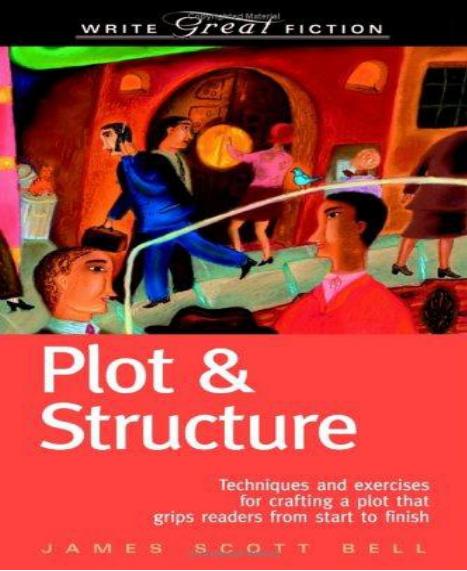Plot and Structure by James Scott Bell

Author:James Scott Bell [Bell, James Scott]
Language: eng
Format: epub, pdf
Published: 2011-03-15T07:00:00+00:00
Determine the take-home value for your novel, and put it into one line. This can be done at any stage of your plotting. If you do it early, keep it in mind as you develop your
Make three columns on a sheet of paper. In the first column, record the rich details that stand out in your scenes. In the middle column, list your main characters. In the last column, catalogue the significant settings. Now look for connections between the columns. Connect a detail with a character and place. Or work the other way, from place to character to detail. Pick the strongest two or three connections, and see if you can weave them into your plot as motifs or symbols.
scenes. But be careful of heavy-handedness when you do. The message must come out naturally.
Music is a great way to brainstorm images for your novel. Relax and do some deep breathing. Put on a piece of music that moves you—perhaps a movie soundtrack, classical music, or jazz. Don't play anything with lyrics. You want the music to wash over you. As it does, close your eyes and let images and even scenes suggest themselves to your imagination. Stop and record these on paper or in the computer. Repeat this exercise from time to time as you write.
[ THE CHARACTER ARC IN PLOT ]
Read, or better, study the immortals and you will be forced to conclude that their unusual penetration into human character is what has kept their work fresh and alive through the centuries.
—Lajos Egri, The Art of Creative Writing
Great plots have great characters. While this is not a book on character creation and implementation, we can't let the subject of plot go without touching on at least one aspect of character work that is all important: character change.
What makes a plot truly memorable is not all of the action, but what the action does to the character. We respond to the character who changes, who endures the crucible of the story only to emerge a different person at the end. It may be a major difference, as with Ebenezer Scrooge in Charles Dickens's A Christmas Carol. Or it may be a subtle change, as when Scarlett O'Hara finally matures at the end of Gone With the Wind (just not soon enough to keep Rhett).
What deepens a plot is when characters grow. Events happen and should have impact on the characters. Are there novels where the characters don't change? Sure. But these are not usually classified as "enduring." In a detective series, for example, the main character may remain rather static, the only change from book to book being the nature of the case.
Even in a series, however, subtle changes in the character over time can elevate the books from mere entertainments. Sue Grafton's Kinsey Millhone and Robert B. Parker's Spencer are examples.
So look to create character change in your novels in a way that deepens the plot and expresses a theme. For when a character learns something or suffers because
Download
This site does not store any files on its server. We only index and link to content provided by other sites. Please contact the content providers to delete copyright contents if any and email us, we'll remove relevant links or contents immediately.
Asking the Right Questions: A Guide to Critical Thinking by M. Neil Browne & Stuart M. Keeley(5649)
Autoboyography by Christina Lauren(5184)
Eat That Frog! by Brian Tracy(4436)
Dialogue by Robert McKee(4323)
Sticky Fingers by Joe Hagan(4103)
Journeys Out of the Body by Robert Monroe(3572)
Annapurna by Maurice Herzog(3424)
Full Circle by Michael Palin(3389)
Schaum's Quick Guide to Writing Great Short Stories by Margaret Lucke(3321)
Elements of Style 2017 by Richard De A'Morelli(3307)
The Art of Dramatic Writing: Its Basis in the Creative Interpretation of Human Motives by Egri Lajos(3017)
Atlas Obscura by Joshua Foer(2900)
The Diviners by Libba Bray(2887)
Why I Write by George Orwell(2877)
In Patagonia by Bruce Chatwin(2876)
The Fight by Norman Mailer(2848)
The Mental Game of Writing: How to Overcome Obstacles, Stay Creative and Productive, and Free Your Mind for Success by James Scott Bell(2845)
Venice by Jan Morris(2526)
The Elements of Style by William Strunk and E. B. White(2442)
